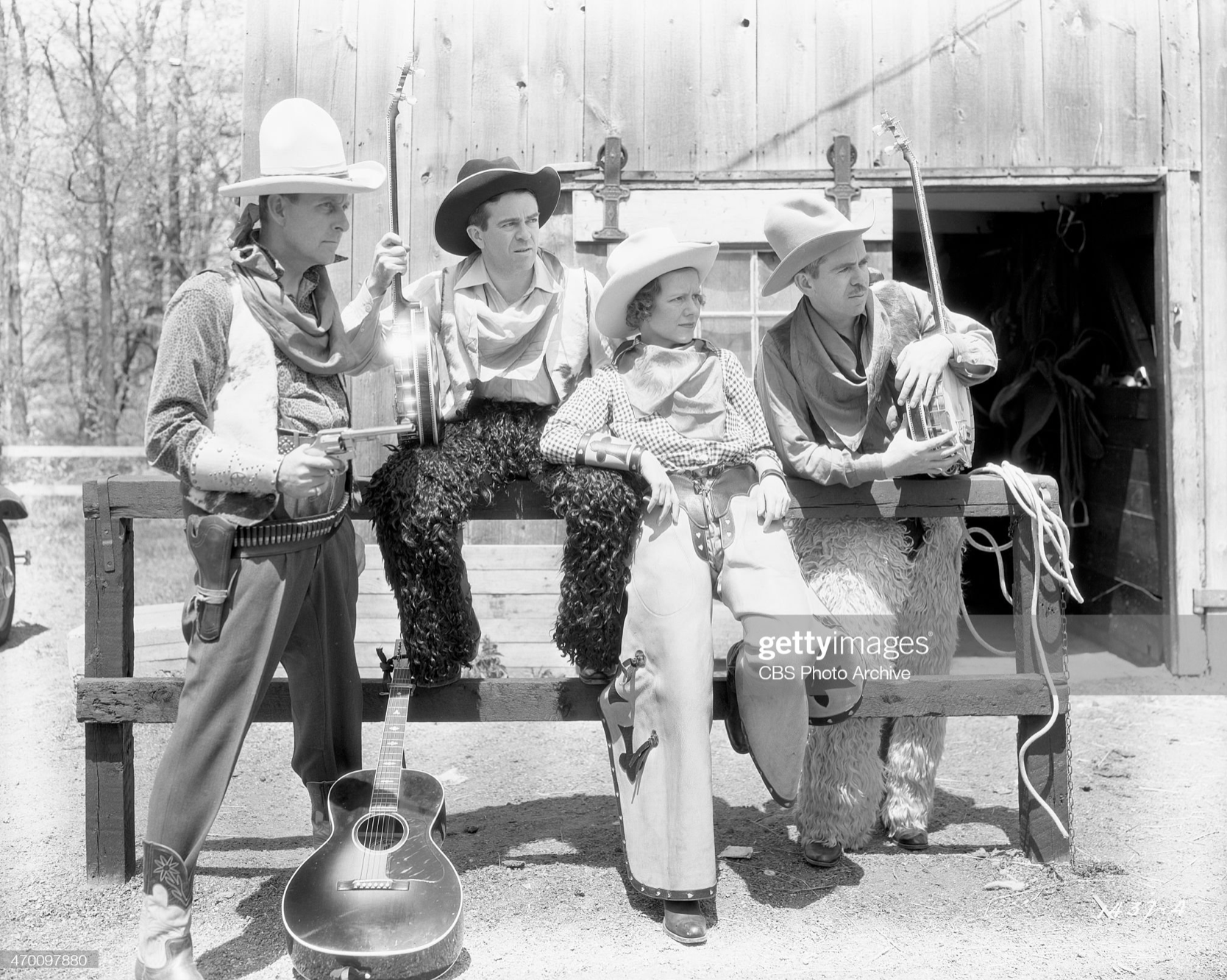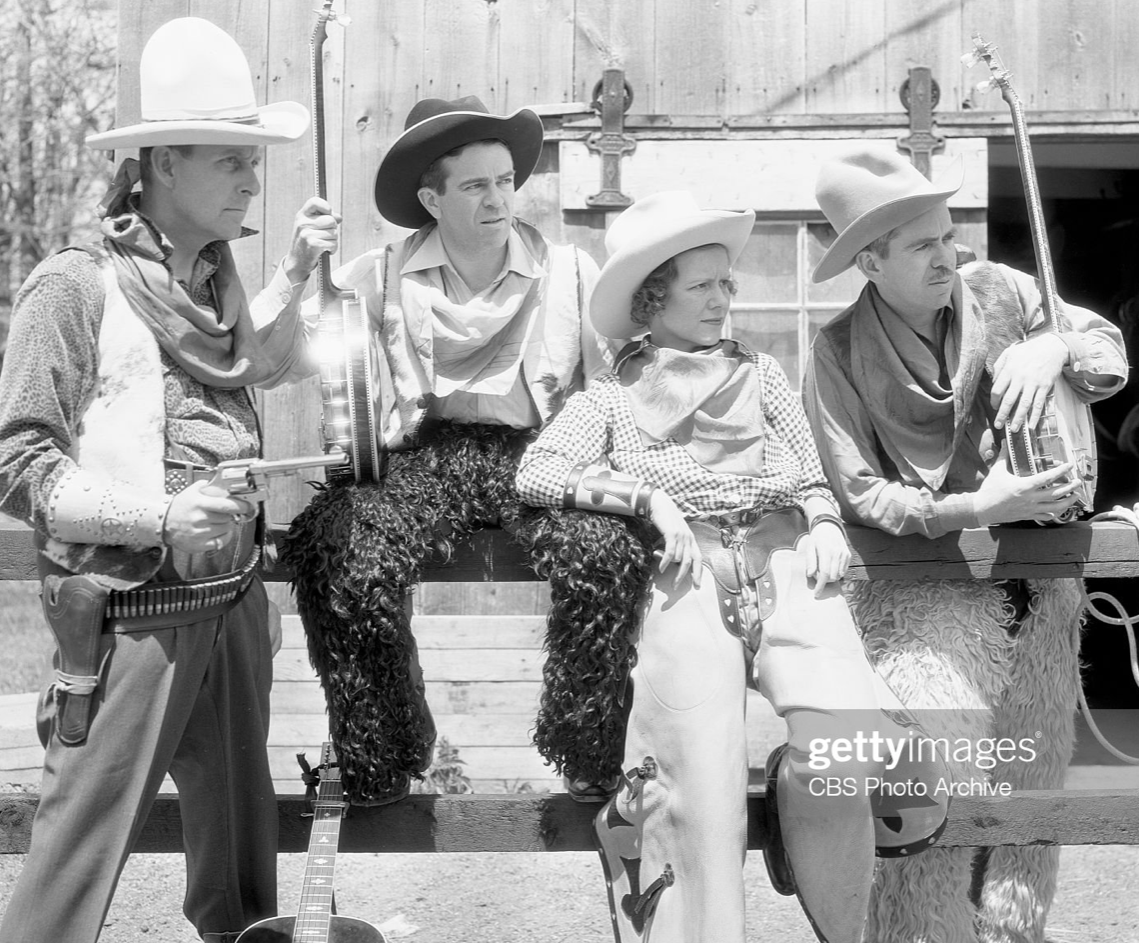
About Carson Robison

Carson J. Robison, also referred to as “the granddaddy of the hillbillies”, was a popular singer, guitarist, whistler, and actor during the 1920s and late 1950s. He was born in Oswego, Kansas, and later moved to Chetopa, Kansas, where he spent most of his childhood. Robison began his music career at the young age of 14, playing guitar professionally. In his 20s, he was well versed in various instruments, and then around the mid-1920s, he collaborated with another famous musician, Vernon Dalhart.
He wrote and recorded under several pseudonyms including Maggie Andrews, Joe Billings, Bud Birmingham, The Kansas Jaybird, Carlos B. McAfee, Sookie Roberts, and Charlie Wells. In time, Robison would be nicknamed the “Grand-daddy of the Hillbillies.”
Pittsburg State University
Although he’s quite forgotten today, he impacted the promotion of country music through his various recordings and radio appearances. In 1920, he moved to Kansas City to become a professional entertainer. While performing on the radio, he gained wide recognition in the midwest.
“He became one of the first country and western entertainers to utilize the new medium of radio and performed regularly for Kansas City’s WDAF”
Pittsburg State University
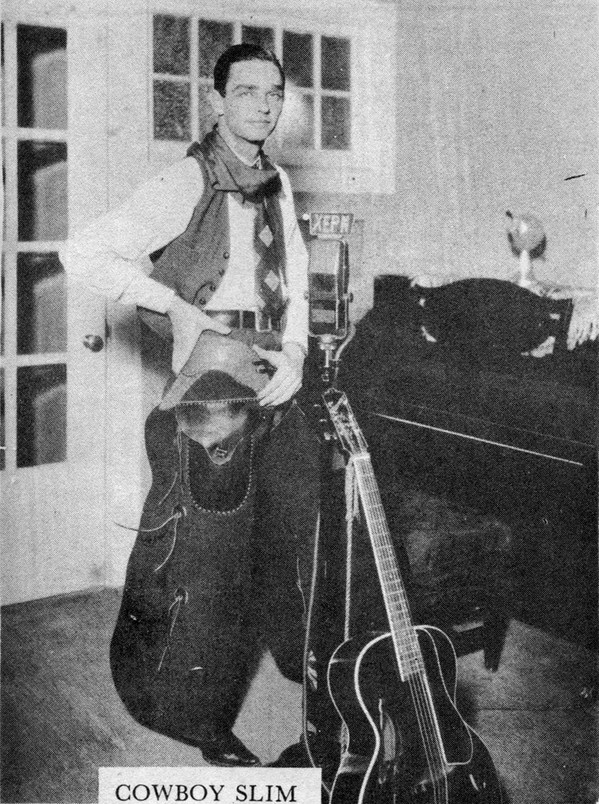

Keep in mind that he was not the only one to promote country music through the use of radio. We know from class that John R. Brinkley did, even though he’s very weird. He also loved to get around the law in any way he could! Since his radio station had 1,000,000 watts, it could reach many countries. This term for reaching another country would be “border blaster” radio. Cowboy Slim or Nolan Alfred Rinehart did the same. Slim gained national recognition as a broadcaster and singer on the border radio station XEG. All three—Carson, Brinkley, and Slim—promoted country music through radio stations.
This guy isn’t even from Texas!
Interestingly, when digging through multiple websites to find information on Carson, I uncovered nothing about him living in Texas. He has songs about Texas, but it seems like he never moved there. Instead, he moved to New York in 1924.
His Buckaroos
Carson Robison released “Carry Me Back To The Lone Prairie” in 1934. Before the song was released, Robison formed his own group called The Pioneers, which later changed to The Buckaroos in 1931. This band included Johnand Bill Mitchell and Pearl Pickens. Frank Novak was also in there, but from how the pictures look, I think he decided to later record with his own group, “Frank Novak and His Rootin’ Tootin’ Boys”. His band “accompanied him on tours in England, Scotland, and Ireland, where they performed for King George and Queen Elizabeth” (Pittsburgh State University).
The Song
Lyrics:
[Verse 1]
Oh, cowboy far away from home
Far from the prairie where I used to roam
Where the dogies wander and the wind blows free
Though my heart is yonder on the lone prairie
[Chorus]
Oh carry me back to the lone prairie
Where the coyotes howl and the wind blows free
And when I die you can bury me
Neath the western skies on the lone prairie
[Chorus]
Oh carry me back to the lone prairie
Where the coyotes howl and the wind blows free
And when I die you can bury me
Neath the western skies on the lone prairie
[Verse 2]
Give me back my saddle give me back my gun
Give me back that bronco that I used to run
Let me spread my blanket near a peaceful stream
Hear the cowboys singin’ by the campfire’s gleam
[Chorus]
Oh carry me back to the lone prairie
Where the coyotes howl and the wind blows free
And when I die you can bury me
Neath the western skies on the lone prairie
[Outro]
Hi-yo!
The Songs Relation To Texas Culture
Carson represents Texas in many ways. Through his lyrics, music, and appearance, he portrays himself as a cowboy from Texas.
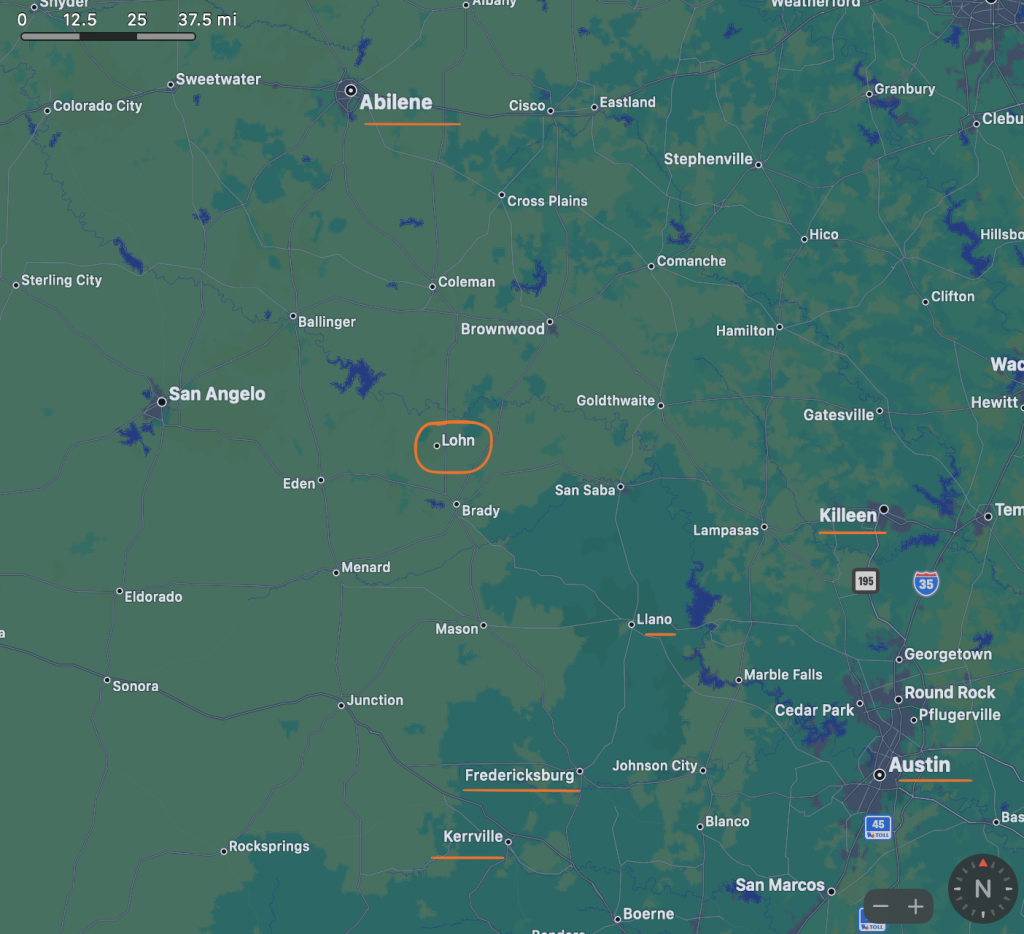
When he mentions the “lone prairie,” there is speculation that the origin of this place was originally in a small town called Lohn, Texas. Eventually, because the lyrics had been altered so many times, they became lonely. Also for fun, I underlined some places that are close by that we mentioned in class before!
Originally, the lyrics to previous versions of this song were “Bury me not on the lone prairie”. This follows the fictional storyline of a young man who died, and his last wish was not to die on the prairie. Welp, he did die on the prairie, as the end of the song goes. Interestingly, the lyrics changed over time, and people started singing “Carry me back to the lone prairie”. I don’t fully know why this occurred, but my guess is that because a prairie is supposed to be seen as vast grasslands and clear open skies, it evokes this feeling of connecting with nature and its surroundings. Its peaceful.
So if the lyrics are referring to Lohn, Texas, then that means there are three different regions that all intersect there! According to Texas Highways, that would be Cross Timbers, Rolling Plains, and Edwards Plateau.

Moving on, this music falls under the genre of folk. This genre of music is known for being transmitted orally from generation to generation. It’s typically hard to find out where certain songs came from. And yes, it is hard to find because I spent so long trying to find the origin of the lyrics, which I talk about later. Some of the instruments used in the video, like the cello, banjo, and guitar, are also associated with this style.

Lastly, Carson dresses like a cowboy. From what we learned in class, it further glorifies this Hollywood idea of what a cowboy should look like. Hollywood western movies such as the one below also helped to promote cowboys and the famous cowboy ballad. Also, even more related to today, we hear the song played in the video game called Red Dead Redemption.
How The Public Interacted With The Song
The video of the song”Carry Me Back To The Lone Prairie” above is called a soundie. They were produced between 1940 and 1946. Think of an MTV music video airing on your TV, except in order to see it, you had to insert a coin into the slot. According to UCLA “Soundies were made to be seen on self-contained, coin-operated, 16mm rear projection machines called Panorams located in nightclubs, bars, restaurants, and other public places”. Soundies are considered precursors to music videos.
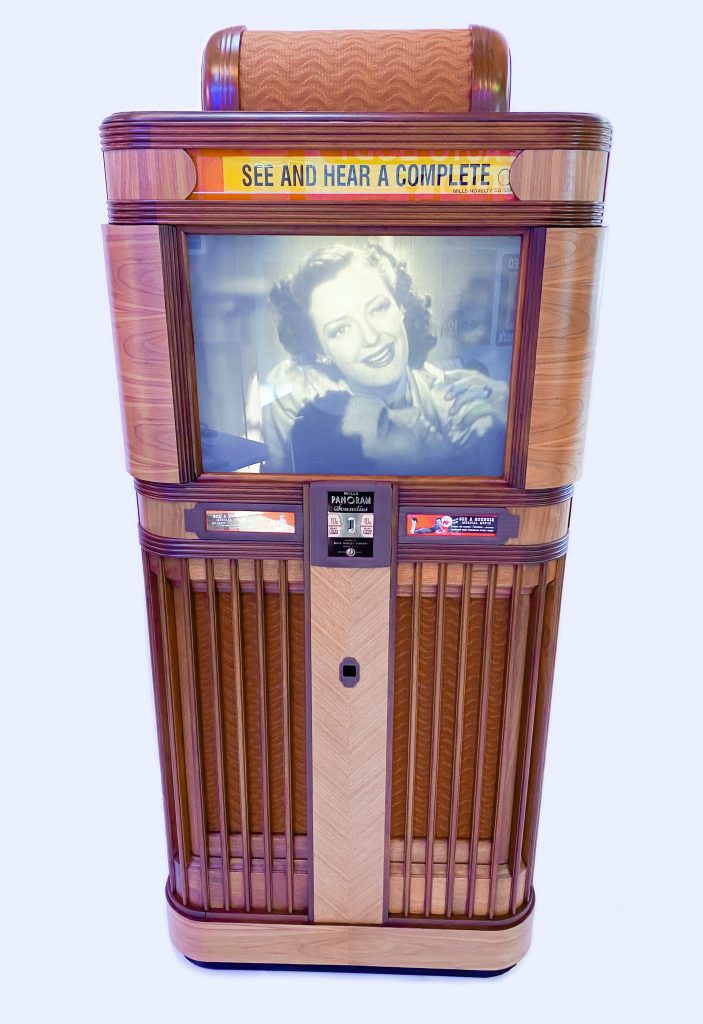
Origin Story
The song’s origins go way back to Bentley Ball’s “The Dying Cowboy” on the album “The Dying Cowboy,” made in 1920. Soon after, this turns into “Bury Me Not on the Lone Prairie,” with the first recording coming from Carl T. Spague in 1926. This song is specifically seen as one of the most famous cowboy ballads. For more clarification, “Cowboy songs are ballads; that is, they are stories in song. Furthermore, many of them are folk ballads, in a very real, if not technical, sense.” (Kansas Historical Society). After this, Carson Robison released “Carry Me Back To The Lone Prairie” in 1934.
Resources:
“Bury Me Not on the Lone Prairie.” Wikipedia, Wikimedia Foundation, 20 Oct. 2022, https://en.wikipedia.org/wiki/Bury_Me_Not_on_the_Lone_Prairie.
“Carson Robison.” Spotify, https://open.spotify.com/artist/2CvR1nMz0qrOMD6Hg62cSp#login.
“Carson Robison.” Wikipedia, Wikimedia Foundation, 15 Sept. 2022, https://en.wikipedia.org/wiki/Carson_Robison.
“Carson Robison and His Buckaroos – Carry Me Back to the Lone Prairie.” Genius, https://genius.com/Carson-robison-and-his-buckaroos-carry-me-back-to-the-lone-prairie-lyrics.
“The Dying Cowboy : Bentley Ball : Free Download, Borrow, and Streaming.” Internet Archive, 1 Jan. 1920, https://archive.org/details/78_the-dying-cowboy_bentley-ball_gbia0110669a/THE+DYING+COWBOY+-+Bentley+Ball.flac.
Hull, Myra. “Cowboy Ballads.” Kansas Historical Society, https://www.kshs.org/p/cowboy-ballads/12777.
Pittsburg State University Pittsburg State University Digital Commons. https://digitalcommons.pittstate.edu/cgi/viewcontent.cgi?article=1108&context=fa.
[Traditional]. “Bury Me Not on the Lone Prairie by Carl T. Sprague.” Second Hand Songs – A Cover Songs Database, https://secondhandsongs.com/performance/318023/originals#nav-entity.
“‘Soundies’: UCLA Film & Television Archive.” “Soundies” | UCLA Film & Television Archive, https://www.cinema.ucla.edu/collections/soundies.

